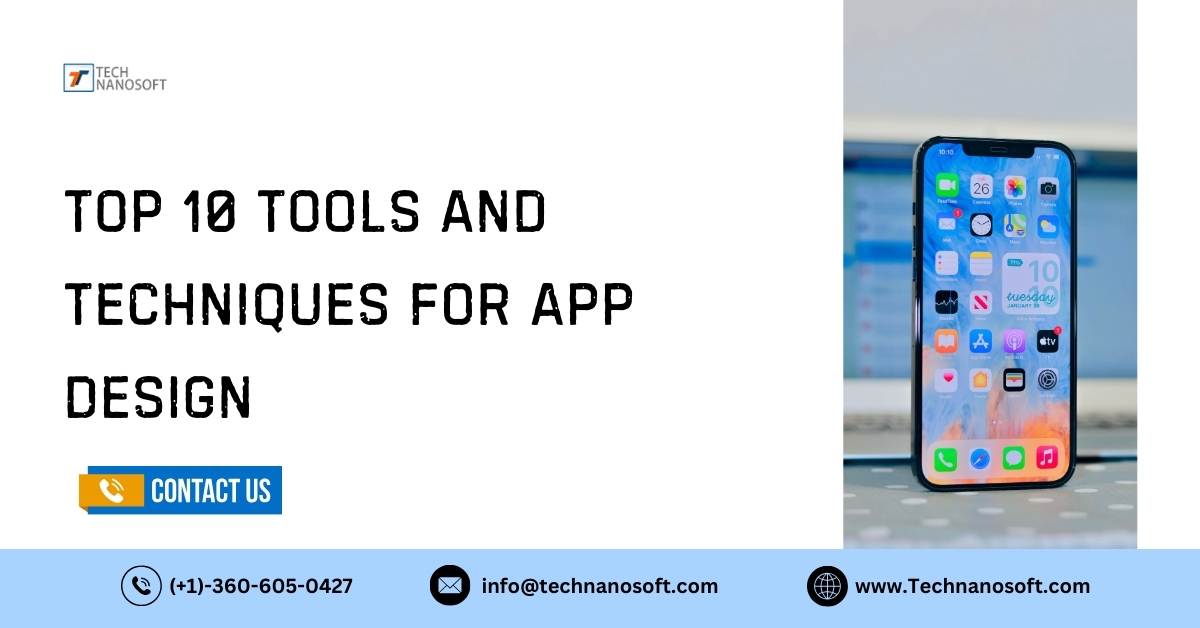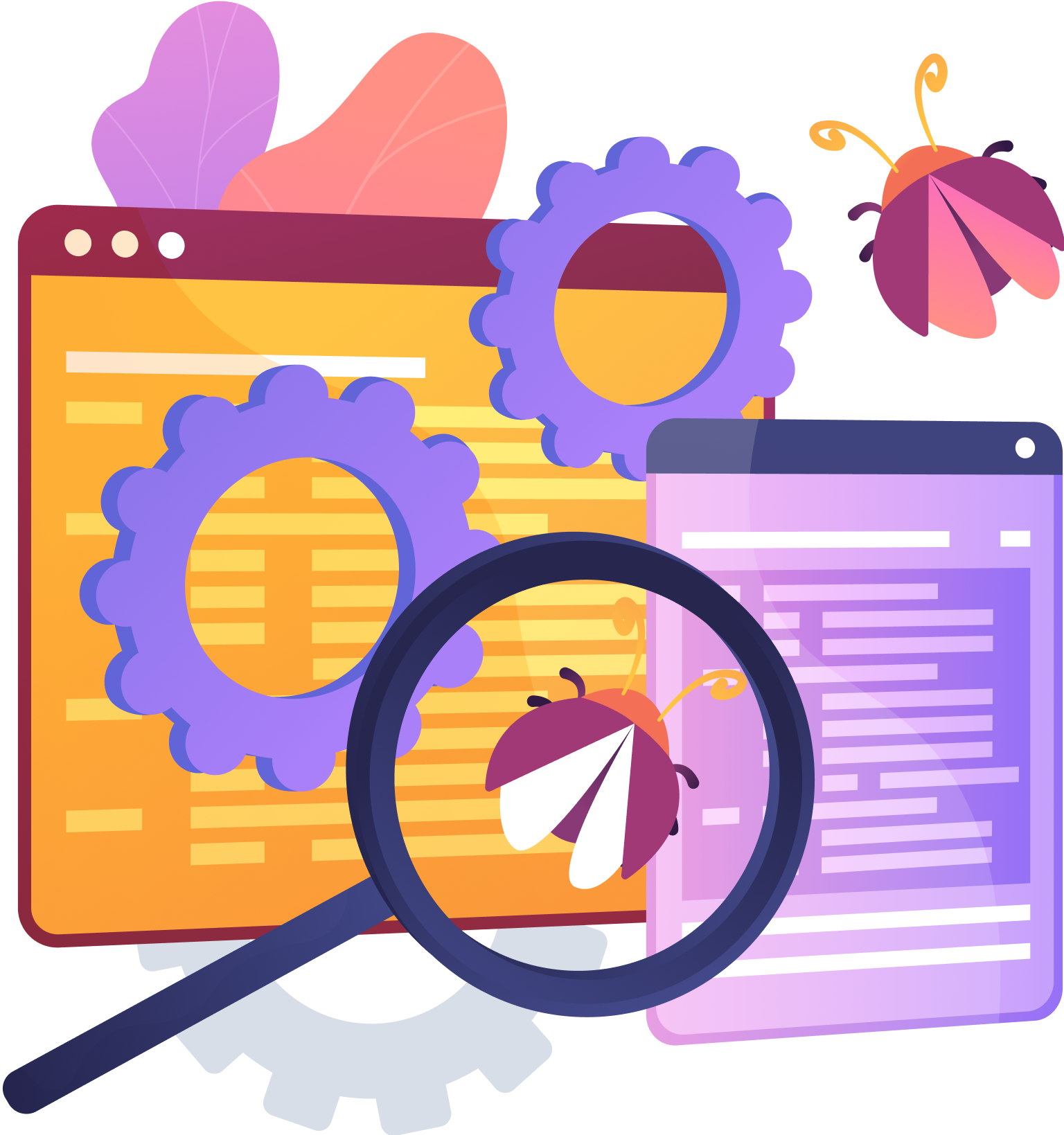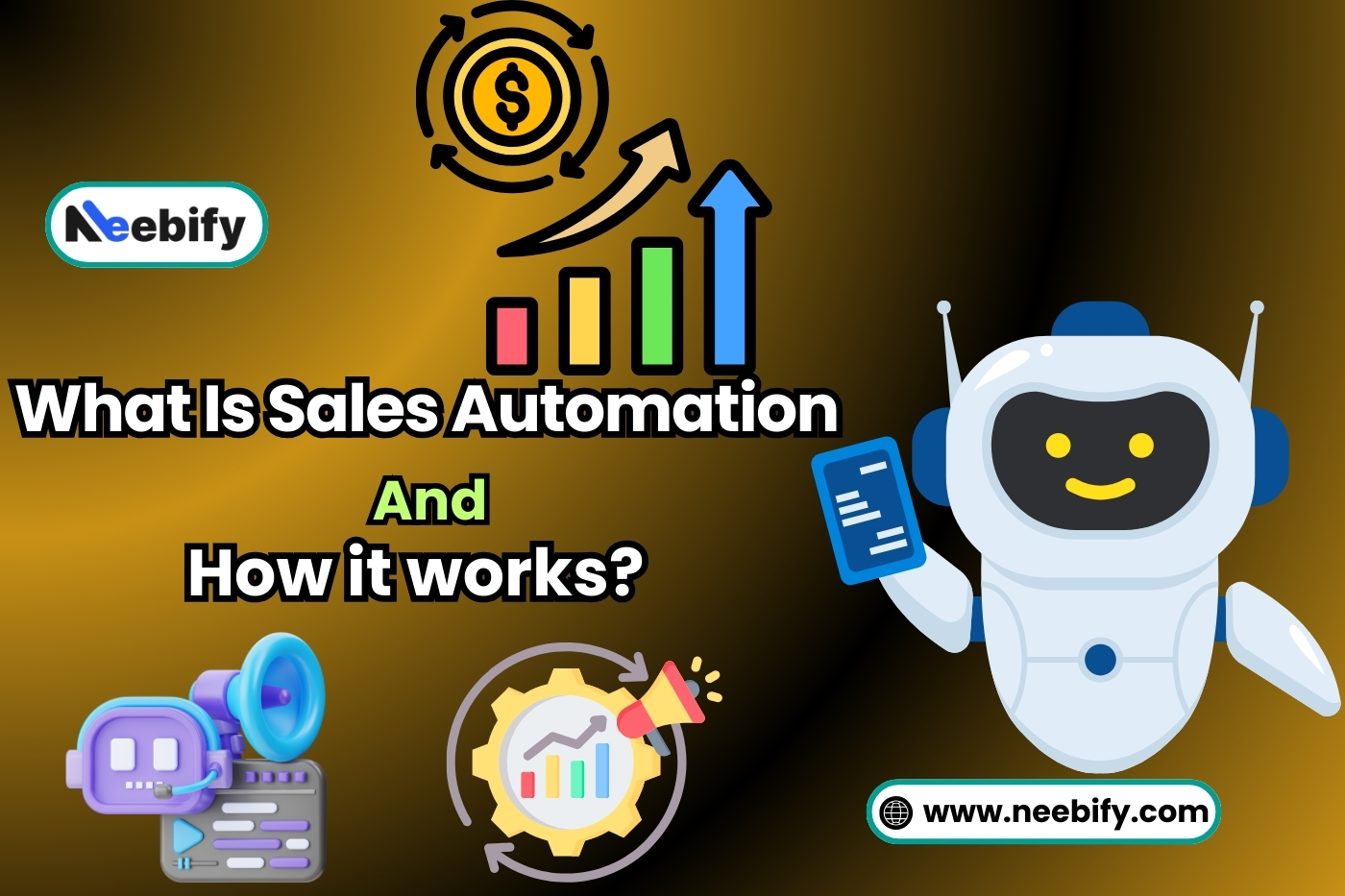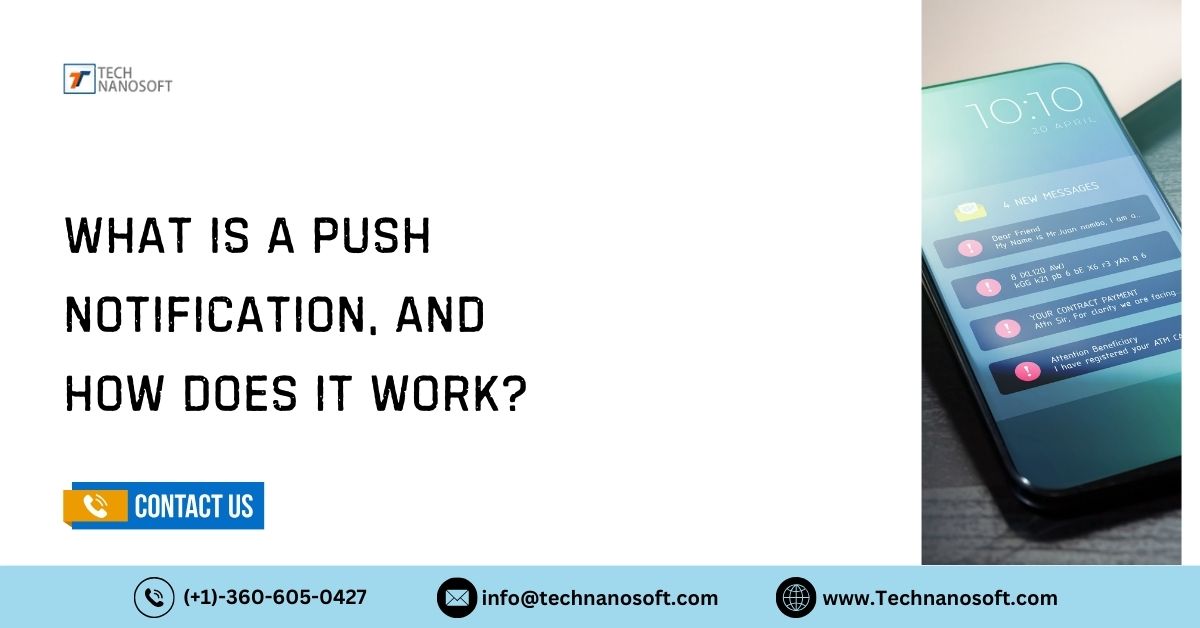Top 10 Tools and Techniques for App Design

We cannot overstate the role that application design plays in providing users with a pleasurable, straightforward, and productive experience in our increasingly digital world. App design encompasses not only an app's visual design but also the product's overall functionality and appearance. Businesses must ensure their mobile applications are exceptionally user-friendly, given the predicted 3.8 trillion hours spent on them in 2021 alone.
This essay examines the complexities of building apps, including wireframe and mockup construction, platform concerns, design tool selection, and optimizing user interactions for optimal responsiveness and engagement.
What is App Design?
App design is the process of developing a mobile application that is not only aesthetically pleasing but also highly functional and user-friendly. The integration of user interface (UI) and user experience (UX) design results in a dynamic and captivating application. The primary focus of user interface (UI) in app creation services is the design and organization of every element a user interacts with, such as text, photos, sliders, buttons, and entry fields.
On the other hand, user experience (UX) is concerned with how users engage with those elements to ensure that the logic of the program makes sense and flows naturally.
Platform Factors in Application Designing
The choice of the right platform is an essential initial step in app design. The two primary platforms to consider are the Google Android operating system and the Apple iOS operating system. User demographic and geographic data, along with the product's objectives, often influence the selection process.
iOS consumers tend to spend more money on the best app design and have higher engagement rates than Android users do. However, Android enjoys wider global usage due to its availability on a wider range of devices at different price points.
iOS App Design
When making iOS apps, you have to follow Apple's Human Interface Guidelines very carefully. These guidelines give you much information about how to create a user interface, how it moves, and how it interacts with other Apple products. To constantly improve the user experience, these guidelines stress principles like depth, deference, and clarity. Designers have to think about different screen sizes so that experiences on iPhones and iPads work well together.
iOS style is more standardized so that users can expect the same experience from all of their apps. Following Apple's rules not only makes sure that you're following the rules, but it also makes apps easier to use and makes users happier, which helps iOS app designers succeed in the competitive market.
Android App Design
Android apps use Google's Material Design language. It focuses on grid-based layouts, flexible animations, padding, and depth effects like lighting and shadows. To keep the look and feel of your designs consistent across devices when you're designing for Android, you need to follow these design rules. Because there are so many Android devices and screen sizes, app makers need help to make sure that their apps are responsive and flexible.
By using Material Design's rules correctly, developers can create apps that are easy to use and look good, which will appeal to Android users and increase the number of people who connect with and keep these apps.
Developing Wireframes and Mockups For Apps
Wireframing is an important part of designing an app because it involves making a basic structure or blueprint that shows where parts will go and how they will work without getting too specific about the design. It helps designers plan how users will interact with and move through the site before they start adding visual features. After wireframing, artists make detailed mockups that show how the app will look and feel in the end.
These mockups include color schemes, fonts, images, and graphical styles. These static mockups help developers and stakeholders see what the final app will look like, which helps set expectations and make the design and development steps go smoothly.
Mobile App Designs vs. Web Design
Mobile Hardware in Apps Design
There is a close relationship between mobile apps design and tablet and smartphone hardware specs. Designers have to carefully take into account things like screen size, pixel density, computing power and features unique to a given device, including GPS, cameras, and sensors. Customizing app experiences for a variety of hardware ensures peak performance and a compelling user experience across multiple platforms, increasing user satisfaction and engagement.
Operating Systems For Developing Applications
Developers create mobile apps for specific operating systems, such as iOS or Android, incorporating their unique design standards, development frameworks, and programming languages. On the other hand, web design needs to support a wide range of browsers and OS versions, which means that in order to preserve consistent functionality and aesthetic appeal across platforms, thorough compatibility testing is required.
Following OS-specific design patterns guarantees easy-to-use interfaces and accessibility, which supports app success metrics and user retention.
App and Web Design Transitions
The design of mobile apps places a strong emphasis on the seamless transitions between interface elements. Mobile apps utilize interactive elements, gestures, and animations to enhance user engagement and facilitate straightforward navigation. Web design, on the other hand, takes user device diversity and browser rendering speeds into account when incorporating transitions.
Striking a balance between performance efficiency and aesthetics ensures a seamless and engaging user experience. This applies to both apps and online platforms.
SVG Supports Visual Consistency
SVGs, or scalable vector graphics, are essential to responsive design because they provide excellent images that adjust to a variety of screen sizes and resolutions with ease. Proper implementation of SVG ensures crisp images, faster load times, and consistent performance across devices, whether in web layouts or mobile app interfaces. By improving site speed and accessibility metrics, optimizing SVG usage improves visual appeal, user experience, and SEO rankings.
Responsive Design For User-Centric Experiences
Modern web and app development is based on responsive design concepts, which enable dynamic layout alterations to meet different screen sizes and orientations. In order to customize content presentation and interactive components for the best possible user experiences on smartphones, tablets, and wearables, mobile app design incorporates responsive techniques.
Using responsive web design strategies will satisfy and engage users, increase search engine visibility, and ensure seamless accessibility across desktop, laptop, and mobile platforms.
Best Practices For Designing Mobile Apps
Leveraging Device Software and Hardware
Beyond aesthetics, effective mobile application design is about making the most of the hardware and software capabilities of the device. This entails making use of device-specific features like cameras, sensors, and GPS while optimizing for different screen sizes, resolutions, and computing power.
Through seamless integration of these components, designers guarantee optimal app functioning across all platforms and devices, as well as flawless performance. This raises user happiness and engagement levels and positions the app as a dependable and easy-to-use option in the crowded mobile market.
Create Meaningful Screen Transitions
A mobile app's ability to offer a smooth and simple user experience is what determines its success. Designers achieve this by utilizing interactive features, gestures, and animations to craft meaningful screen transitions that align with user expectations and app functionalities. In addition to improving usability, deliberate screen transitions help users stay engaged and follow the app's navigation flow. This focus on detail raises user satisfaction levels overall, promotes prolonged app usage, and generates favorable reviews and comments.
Create Beautiful App Icons
App icons serve as more than simply visual cues. They also serve as consumers' initial impressions of your program. For your app to be visible and recognized, you must create visually appealing and unique symbols that respect platform design requirements and represent your brand identity. Not only do easily identifiable symbols encourage app downloads, but they also foster sustained user engagement and brand loyalty.
Optimizing app icons for different screen resolutions and sizes ensures consistency across devices, further boosting user confidence and brand credibility.
Design Anticipatory Loading Screens
Mobile apps will always have loading screens, but users don't have to find them tedious or annoying. Designers use anticipatory loading screens to deliver entertaining animations or educational content about software features or branding. In addition to hiding loading times, these panels inform and amuse users, which enhances the app's overall impression and user satisfaction.
Optimizing loading screens for quicker loads also greatly aids in maintaining user engagement and lowering app abandonment rates.
Use Notifications Sparingly
However, when used improperly, notifications may be a very effective tool for keeping users interested and encouraging app abandonment. Providing timely and pertinent notifications that enhance users' experiences is a top priority for designers. Personalization, customization choices, and consideration for user preferences in relation to notification frequency are critical tactics for fostering positive user engagement.
It may retain long-term app usage, promote user loyalty, and maintain a positive user experience by finding the correct balance and emphasizing quality over quantity.
READ ALSO- What is a soft launch to test the functionality of a product?
The Top 10 Finest App Design Tools
Sketch
Sketch is a powerful tool for UI/UX creation that works best on macOS. One thing that makes it stand out is that it uses a vector-based approach to make sure that UI elements stay clear and scalable across different screen sizes without losing quality. Because of this, it's perfect for creating applications that are very complicated and need to be precise.
One of the best things about Sketch is that it has a huge library of plugins and can seamlessly integrate them with other programs. This lets artists improve their workflows and get more features. Its easy-to-use interface also enables designers of all types to use it, which encourages creativity and productivity.
Overall, Sketch's focus on clean, scalable design elements, along with its large community of plugins and easy-to-use layout, makes it a top choice for designers who want to create sophisticated and visually appealing UI/UX designs.
Adobe XD
There are many UI/UX design tools, like Adobe XD, which has many graphic design tools and the ability to make wireframes. Its powerful prototyping features make it easier for creators to create interactive prototypes, which is what makes it stand out.
Adobe XD is unique because it works well with other Adobe tools and lets you share designs directly with stakeholders so they can give you feedback right away. This makes the design iteration process simpler, which speeds up the job and makes the designs better.
With Adobe XD, designers can quickly move from design to prototype, making the design process smooth and easy for everyone to work on together. Its easy-to-use layout and powerful set of tools make it a top choice for designers looking for quick and effective UI/UX design solutions.
Figma
The browser-based UI/UX design tool Figma is known for letting people work together and make changes in real-time. It allows several artists to work on the same project at the same time, even if they are in different places. This encourages collaboration and creativity.
One of Figma's best features is that it works in the cloud, so you only need a few tools to use it. This makes design and prototype development go smoothly. Figma's easy-to-use layout and large set of tools make it quick for designers to create designs and make changes to them.
Figma is the best option for teams working on complex projects that require quick design changes and effective collaboration methods due to its focus on teamwork and strong, user-friendly design features.
InVision
InVision is a complete tool for making prototypes, making it easier for design teams to work together. Its interactive and collaborative features let team members give feedback, make changes to ideas, and speed up the design process.
InVision excels at transforming static designs into clickable mockups for users and stakeholders to test rapidly. This makes decisions faster and makes sure that design choices are based on comments from users.
The focus on collaboration in InVision, along with its easy-to-use interface and full prototyping features, makes it an invaluable tool for teams that need to deliver user-centered, impactful designs within short deadlines.
Axure RP
Without knowing how to code, programmers can easily create functional and interactive prototypes with the powerful modeling tool Axure RP. Programmers who create complex apps with intricate user flows and extensive interaction utilize it.
One of the best things about Axure RP is that it can model complicated interactions and workflows, which lets designers show off detailed demos of their work. Because of this, it's perfect for UX work that needs thorough simulations and demonstrations of the user experience.
Axure RP is an excellent choice for designers who want to create immersive and user-centered digital experiences because it focuses on prototyping complexity, has an easy-to-use interface, and has interactive features.
Marvel
Marvel stands out as a flexible piece of design software that does a great job of coming up with ideas and making prototypes quickly. Its easy-to-use design interface lets artists rapidly turn ideas into working prototypes, which encourages innovation and trial and error.
One great thing about Marvel is that it works well with other programs, such as Sketch and Adobe XD. As a result, designers can easily import and change designs within Marvel. This compatibility speeds up work processes and makes sure that designs are consistent.
Marvel is a great choice for artists who want to test design ideas quickly and easily because it is easy to use and can make prototypes rapidly. Its ability to connect with different tools makes it even more flexible and useful in a wide range of creative workflows.
Proto.io
Proto.io is a strong tool for making detailed and interactive prototypes of apps, with a focus on simulating a lot of user interaction. It has a lot of tools that designers can use to make prototypes that look a lot like the end product. This helps with user testing and presentations.
One great thing about Proto.io is that it has a lot of interactive features and transitions that make it easy for designers to bring static designs to life. Prototypes with this much detail and realism make it easier to get accurate feedback and approval from users during the planning process.
Because Proto.io focuses on interaction design and has an easy-to-use interface with real-time previews, it is a popular choice among designers working on apps with complicated interactions and interface features. Its ability to make immersive prototypes makes it easier for design teams and partners to work together and make decisions.
Balsamiq
Balsamiq is a tool for fast wireframing that makes it feel like you're drawing by hand on a computer whiteboard. Its purposely low-fidelity style pushes designers to focus on structure and content instead of fine-grained design elements. This makes it perfect for coming up with ideas and brainstorming early on.
One of the best things about Balsamiq is how simple and easy it is to use. This lets artists quickly sketch out ideas and make changes to wireframes. This method of fast prototyping makes it easy for teams to get feedback quickly and agree on early design ideas.
Balsamiq is a useful tool for designers and teams who want to speed up the early stages of coming up with design ideas and developing concepts because it focuses on wireframing basics and shared features. The focus on simplicity and functionality encourages creativity and makes design talk more clear.
Affinity Designer
Affinity Designer is a vector graphic design program that is known for being fast, accurate, and having many features. It provides designers with all the tools they need to create complex and high-quality designs without requiring them to pay a monthly fee, which saves them money.
One of the greatest things about Affinity Designer is how well it works. It lets creators work on complicated projects without slowing down or sacrificing quality. It can work with a lot of different vector graphics and design processes, which makes it a good choice for app designers who want to create designs that are detailed and well-polished.
Affinity Designer's one-time purchase plan, along with its powerful design tools and fast performance, makes it a reliable choice for designers who want to get their work done quickly and correctly. It's popular with design workers because it's affordable and has a lot of features.
Origami Studio
Facebook created Origami Studio, a free design tool for making and sharing user experiences that change over time. Its large library of components and real-time previews make it easy for designers to create interactions that are both complicated and advanced.
One great thing about Origami Studio is that you can make prototypes of apps with very detailed motion and interfaces. This makes it perfect for designers who want to make user experiences that are both immersive and dynamic. It works well with many other platforms and apps, which makes it even easier to use and more flexible in creating workflows.
Focusing on dynamic interactions and real-time previews in Origami Studio encourages quick iteration and experimentation. This allows designers to improve designs based on user feedback and testing. Its collaborative features and sets of components make design development and refinement quick and easy. This makes it a useful tool for app designers who want to make their designs stand out and be innovative.
Screen and Display Orientation
Because there are devices with varying screen sizes and display capabilities, it is imperative to design with screen orientation in mind. App designs should be flexible enough to accommodate both portrait and landscape orientations, as needed. This flexibility ensures that the app's user interface will always be readable and available, no matter how the user holds their smartphone.
Appropriateness
Responsive app design is a user-centric approach that ensures that an application's user interface (UI) functions properly across a range of devices. It is crucial to have a consistent experience on all devices—phone, tablet, and desktop. This layout and flexible navigation ensure easy readability and engagement, which is essential for user retention and enjoyment.
As the number of mobile devices rises, responsive design becomes more and more necessary for app usability and appeal, not just a passing trend. Developers may effectively cater to users' varied screen layouts and preferences by allocating resources towards flexible design, making applications more resilient and adaptive in an ever-changing digital landscape.
Creating Apps with Best User Experience in Mind
To make a great app experience, you need to know a lot about your users' needs, habits, and interactions. This process includes designing something that looks good, is simple to use, and is easy to navigate. User testing is an important part of the design process because it shows how people actually use and interact with the app's features and design in real-time.
Not only does user testing improve the overall experience for users, but it also shortens the learning curve by making sure users are secure and at ease while using the app. Developers can create apps that not only meet but also exceed user expectations by iteratively improving design elements based on feedback from users. This makes users happy and loyal over time.
FAQs For App Design
Q.1- Why is it important to create apps?
A- The design of an app is very important for getting people to use it and keeping their attention. A well-designed app makes it easier to use, gives users a good experience, and makes them more likely to use it regularly. Design elements like easy browsing, appealing graphics, and smooth interactions all help to make users happy and the app successful as a whole.
Q.2- What impact does user experience (UX) have on the creation of apps?
A- UX is the overall experience that people have when they use an app. Good UX design considers what users want, how they act, and what they expect in order to create interfaces that are easy to use and enjoyable experiences. By putting UX first in app design, developers can keep users longer, get them to use the app more, and build a good brand image.
Q.3- What are the most important things to think about when making a mobile app?
A- When making a mobile app, designers need to think about things like how well it works on different devices, how easy it is to navigate, how nice it looks, how to improve speed, and following the rules for each platform (iOS, Android). For good app design, it's also important to keep up with design trends, balance the look and feel of the app with its functionality, and take user feedback into account.
Q.4- How important is testing for usefulness when making an app?
A- Usefulness testing looks at how people use an app to find problems with its usefulness and get ideas for how to make it better. Using usability tests at different stages of app development helps find places where users are having trouble, improves the way they can navigate, and makes sure that design elements match what users expect. In the end, usability testing makes an app easier to use and more interesting.
Q.5- What part does branding play in making an app?
A- When designing an app, branding involves the use of colors, fonts, and tones that convey the brand's values and desired perception. Consistent branding throughout the app helps users remember the brand, builds trust, and sets the app apart from competitors. Adding branding features with care makes users more interested and promotes brand loyalty among app users.
Q.6- How does the design of an app affect how engaged and loyal users are?
A- By making experiences that are smooth and fun, app design directly affects how engaged and loyal users are. Clear calls to action, personalized content, and responsive design features increase user engagement. Well-designed apps that give users good experiences lead to higher retention rates, better user satisfaction, and positive recommendations from other users.
Q.7- What are the latest trends in making apps?
A- Minimalist interfaces, dark mode choices, immersive animations, voice user interfaces (VUI), augmented reality (AR) integrations, and inclusive design principles are some of the latest trends in app design. Focusing on accessibility, micro-interactions, data protection, and sustainability is also in line with current app design trends that are all about making experiences that are user-centered and ethical. Keeping up with these trends can help you figure out how to build apps that get the most out of users and stay relevant in the market.
Q.8- How does flexible design change how easy it is to use an app?
A- With responsive design, apps can easily be changed to fit different device screen sizes and orientations. This makes it easier to use because it ensures that the user has the same experience and can see the same information on all devices. Users are happier and more engaged with an app when they can access and use it. This is called responsive design.
Q.9- What are the best ways to create navigation in a mobile app?
A- The design of mobile app navigation should focus on making things as simple, clear, and easy to use as possible. Best practices include using easy-to-remember icons, clear labels, hierarchical menus for more complicated apps, sparing motions, and a search function. Thoughtful navigation design makes things easier for users, helps them finish their tasks faster, and improves their entire experience.
Q.10- How does color psychology impact the design of apps?
A- Color psychology is an important part of app design because colors can make you feel things and send messages. Designers use colors in a planned way to get people to react the way they want them to. For instance, designers use blue to convey trust and professionalism and red to convey urgency or energy. Harmonizing color schemes, considering cultural associations, and ensuring usability (using color contrast to make text easy to read) are all important parts of using colors well in app design.









